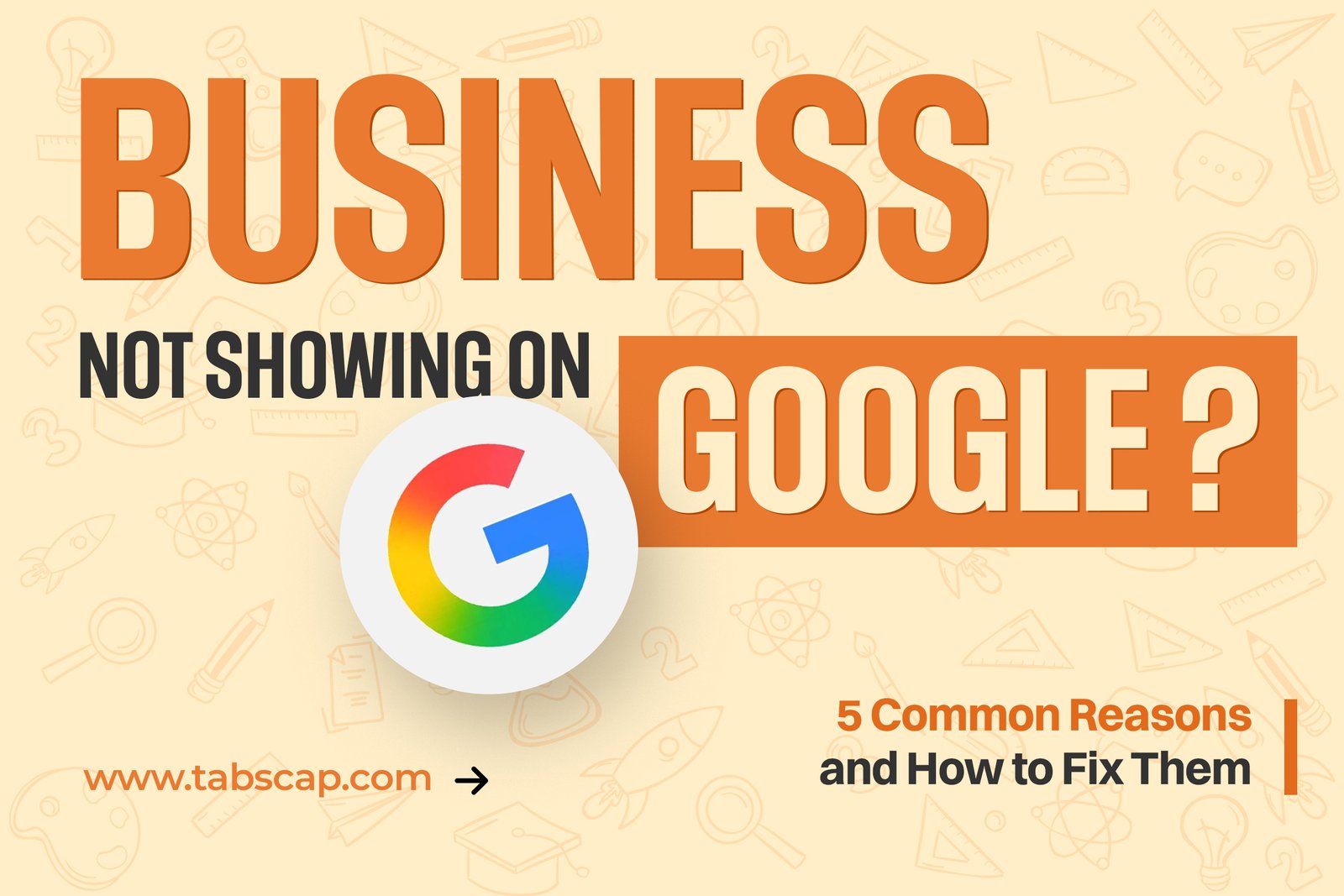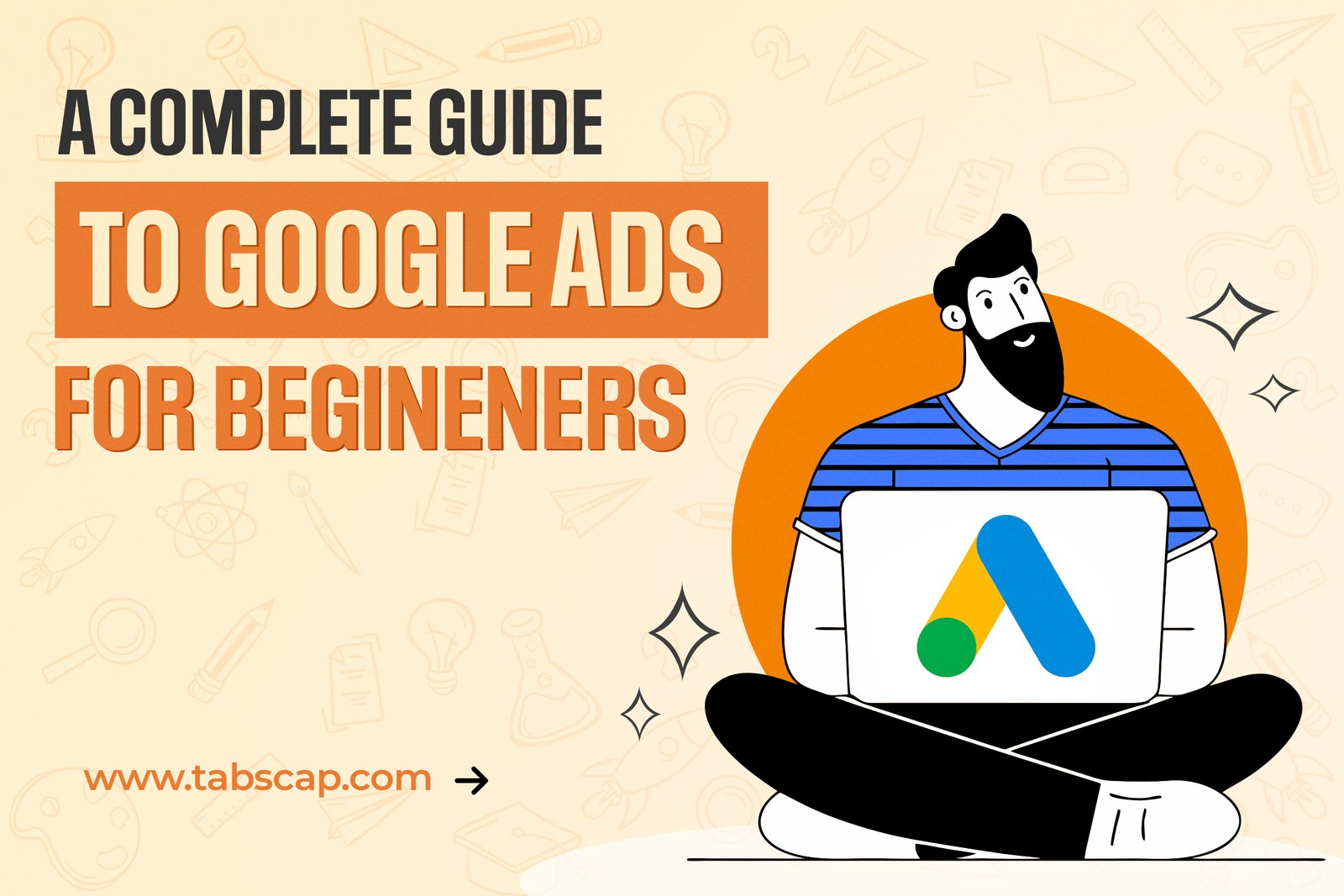

You searched for your business... but nothing showed up on Google. Frustrating, right? If your business not showing on Google, it's almost as if it doesn't exist.
Online visibility isn't just a nice-to-have. It's a critical component of survival and growth for businesses of all sizes, especially those relying on local customers.
When potential clients search for products or services you offer, you want to be right there at the top of their search results, not buried on page five or completely absent.
This comprehensive guide will walk you through the five most common reasons why your business is missing from Google and, more importantly, provide actionable, easy-to-understand fixes.
We'll also throw in a bonus tip to ensure your online presence is as robust as possible. By the end, you'll have a clear roadmap to fix business not showing in Google search and boost your visibility.
Related: How Google My Business is The Best Tool for Local SEO
Reason #1: Your Google Business Profile Is Not Verified
One of the most frequent culprits behind a business not showing on Google is an unverified Google Business Profile (GBP).
Your Google Business Profile is your free business listing on Google, appearing in Google Search and Maps. It's how Google understands your business's existence, location, and services.
Without verification, Google cannot fully trust the information you've provided, and thus, it won't display your listing prominently, if at all.
Verification is Google's way of confirming that you are the legitimate owner or authorized representative of the business at the specified location. It's a crucial step that unlocks all the features of your GBP, allowing you to manage your information, respond to reviews, post updates, and gain valuable insights.
Fix: Step-by-Step to Verify Your Profile
Google offers several methods for verification, and the options available to you may vary based on your business type, public information, and region.
Here are the most common methods:
- Video Verification: This is often the quickest method. You'll use your mobile phone to record a real-time video showing proof of your business location (exterior signage, nearby landmarks), proof of operation (branded work vehicles, tools, inventory), and proof of management (yourself unlocking the door, accessing POS, or showing business documents like licenses). This cannot be done on a desktop.
- Phone or Text Verification: Google sends a verification code via a call or text message to your registered business phone number.
You simply enter this code into your profile. Ensure your phone can receive calls or texts and is not an IVR system.
- Email Verification: If eligible, Google will send a code to the business email address associated with your listing. Follow the steps in the email to complete verification.
- Live Video Call Verification: A Google representative conducts a real-time video call through Google Meet.
You'll need to show proof of your business location and operations, similar to video verification. This is usually available during your business hours.
- Postcard Verification: Google mails a postcard containing a unique verification code to your business address.
Once you receive it (which can take up to 14 days), you enter the 5-digit code into your profile. It's crucial not to edit your business name, address, or category while waiting for the postcard, as this can invalidate the code. This method is becoming less common.
How to initiate verification:
- Search for your business name and city on Google or go to Google Business Profile Manager.
- Look for a "Get verified" button or similar prompt.
- Follow the instructions for the verification method Google offers you.
- After completing the steps, Google reviews the information, which can take up to 5 business days. You'll receive a notification when verification succeeds or fails.
Tip: If you encounter issues, the Google Business Profile Help Community is an excellent resource. For complex cases, an experienced SEO agency or SEO company specializing in GMB Optimisation can assist with the verification process and ensure compliance with Google's guidelines.
Reason #2: Incomplete or Incorrect Business Information
Even if your Google Business Profile is verified, inaccurate or insufficient information can severely hinder your visibility.
Google's algorithms prioritize accuracy and consistency. If your business name, address, phone number (NAP), hours, or category are wrong, outdated, or inconsistent across the web, Google will have less confidence in your listing, making it less likely to show it to users.
This is a common reason why your business is missing from Google search results.
Common issues include:
- Wrong Business Name: Slight variations can confuse Google.
- Incorrect Address: Even a minor typo can make your location unfindable.
- Outdated Phone Number or Website URL: Leads to a poor user experience and lost opportunities.
- Incorrect Business Category: Choosing a category that doesn't accurately reflect your primary service can misguide Google about what your business offers.
- Missing Hours of Operation: Customers need to know when you're open.
- Lack of Photos or Description: A barren profile provides little value to potential customers.
Fix: How to Audit and Optimize Your Business Info for Local SEO
Regularly auditing and optimizing your Google Business Profile is crucial for strong local SEO.
Log in to your Google Business Profile: Access your profile via Google Search (search for "my business" or your business name) or the Google Maps app.
Review all sections meticulously:
- Name, Address, Phone (NAP): Ensure these are identical to how they appear on your website and other online directories. Consistency is key. For example, if your website says "Street," don't use "St." on your GBP.
- Categories: Select the most specific primary category that describes your business. Add secondary categories to cover all your services. Don't stuff keywords into your business name or categories.
- Hours: List your regular business hours, special hours for holidays, and any temporary closures.
- Services/Products: Detail the services or products you offer. This helps Google understand your offerings and match them to relevant searches.
- Description: Write a compelling, keyword-rich description (up to 750 characters, with key info in the first 250) that highlights your unique selling points. Avoid links or HTML.
- Photos: Upload high-quality photos of your storefront, interior, products, and team. Businesses with photos receive more engagement. Geo-tagging photos can also help local relevance.
- Attributes: Select relevant attributes (e.g., "wheelchair accessible," "free Wi-Fi," "online appointments") to provide more information to customers.
- Q&A: Monitor and answer questions posed by users. You can also "seed" this section with frequently asked questions.
- Posts: Regularly publish Google Posts about offers, events, news, or products. This keeps your profile active and engaging.
Consistency across all online platforms is crucial for local SEO. If you've recently moved or changed your business name, update your GBP immediately and ensure those changes are reflected everywhere else online.
An SEO company specializing in local SEO can perform a comprehensive audit to identify and correct any inconsistencies.
Reason #3: Your Website Isn’t SEO-Optimized
While your Google Business Profile handles your local listing, your website is your digital storefront.
If your website isn't optimized for search engines, it won't rank well for relevant keywords, meaning potential customers won't find you even if they're actively searching for your services. This is a significant factor if you're wondering, "Why is my business not showing on Google?"
Common website SEO issues include:
- Poor or Missing Metadata: Title tags and meta descriptions are crucial for telling search engines what your page is about and enticing users to click.
- No Local Keywords: Your website content might not be optimized for local search terms (e.g., "best coffee shop Ludhiana" instead of just "best coffee shop").
- Slow Site Speed: Google prioritizes fast-loading websites. Slow sites lead to high bounce rates and lower rankings.
- Not Mobile-Friendly: A significant portion of searches happen on mobile devices. If your site isn't responsive, Google will penalize it.
- Thin or Duplicate Content: Google values unique, high-quality, and comprehensive content.
- Poor Site Structure: A disorganized website can be difficult for search engine crawlers to navigate and understand.
Fix: Basics of On-Page SEO
Optimizing your website for search engines involves a combination of technical and content-related adjustments.
- Keyword Research and Integration: Identify keywords your target audience uses, including local keywords (e.g., "plumber near me," "bakery in [your city]"). Naturally integrate these into your website content, headings, and metadata. Don't keyword stuff.
- Optimize Title Tags and Meta Descriptions:
- Title Tags: (The clickable headline in search results) Should be unique for each page, include your primary keyword, and be compelling (under 60 characters).
- Meta Descriptions: (The short summary below the title in search results) Should be unique, descriptive, include keywords, and encourage clicks (under 160 characters).
- High-Quality Content: Create valuable, informative, and engaging content that thoroughly covers topics relevant to your business. Aim for "information gain" – provide something new or better than what's already out there. Use clear, concise language and break up text with headings (H1, H2, H3), bullet points, and images for readability.
- Mobile-Friendly Design: Ensure your website is fully responsive and provides a seamless experience on all devices (desktops, tablets, smartphones). Use Google's Mobile-Friendly Test tool to check your site.
- Improve Site Speed: Optimize images, leverage browser caching, minify CSS/JavaScript, and use a reliable hosting provider. Google PageSpeed Insights can help identify issues.
- Optimize URLs: Create short, descriptive, and keyword-rich URLs (e.g., yourwebsite.com/services/plumbing-ludhiana).
- Internal Linking: Link relevant pages within your website using descriptive anchor text. This helps search engines understand your site's structure and passes "link juice" between pages.
- Image Optimization: Use descriptive alt text for all images. This helps search engines understand the image content and improves accessibility. Compress images to reduce file size without sacrificing quality.
- Schema Markup: Implement structured data (schema markup) to help search engines better understand your content, such as business type, reviews, and products. This can lead to rich snippets in search results, increasing visibility.
If website SEO feels overwhelming, consider partnering with a reputable SEO agency.
They can conduct a thorough SEO audit, implement necessary changes, and develop a long-term strategy to ensure your website ranks highly and consistently.
Reason #4: No Local Listings or Citations
Beyond your Google Business Profile, your online presence is strengthened by "citations." Citations are mentions of your business's Name, Address, and Phone number (NAP) on other websites even if there isn't a link back to your site.
These can be on online directories, review sites, social media platforms, or local business listings.
Why are they important? Google uses NAP consistency across the web as a strong signal of legitimacy and accuracy.
The more consistent and numerous your citations are on reputable sites, the more trustworthy your business appears to Google, which directly impacts your local search rankings. If your business not showing on Google for local searches, a lack of citations could be a major reason.
Fix: Submit Your Business to Top Directories
Building a strong citation profile involves ensuring your NAP information is consistent everywhere and actively submitting your business to relevant directories.
- Audit Existing Citations: Start by searching for your business online to identify any existing listings. Note down any inconsistencies in your NAP information. Tools like Whitespark or BrightLocal can help automate this audit.
- Correct Inconsistencies: Prioritize correcting any inaccurate or outdated NAP information on existing listings. Even minor discrepancies (e.g., "Road" vs. "Rd.") can confuse search engines.
- Submit to Top Directories: Manually submit your business information to high-authority, general, and industry-specific directories.
- General Directories: Yelp, Bing Places for Business, Apple Maps, Foursquare, Yellow Pages, etc.
- Local Directories: Your local Chamber of Commerce, city-specific business listings, etc.
- Industry-Specific Directories: If you're a restaurant, list on OpenTable. If you're a lawyer, list on Avvo, etc.
- Social Media Profiles: Ensure your NAP is consistent on all your social media profiles (Facebook, Instagram, LinkedIn, X, etc.).
- Data Aggregators: Some services can submit your NAP data to primary data aggregators, which then feed information to hundreds of other sites. This can be a time-saving option.
Remember, quality over quantity. Focus on reputable and relevant directories. A dedicated SEO company often includes citation building and management as part of their local SEO services, ensuring your business has a robust and consistent online footprint.
Reason #5: Low or No Online Reviews
Google heavily favors businesses with a consistent stream of positive, high-quality reviews, especially on their Google Business Profile.
Reviews act as social proof, building trust with both potential customers and Google's algorithms.
A low review count or a prevalence of negative reviews can significantly impact your ranking and visibility, making it seem like your business is missing from Google's top results.
Google considers:
- Quantity: The total number of reviews.
- Quality: The average star rating.
- Recency: How recent the reviews are.
- Velocity: The rate at which new reviews are acquired.
- Keywords in Reviews: Reviews that mention specific services or products can boost relevance.
Related: 6 Reasons Why Reviews Matter & Ways To Get More Of Them
Fix: How to Ask for and Manage Google Reviews Ethically
Encouraging reviews is crucial, but it must be done ethically, without offering incentives for positive feedback.
- Provide Exceptional Service: The foundation of good reviews is an excellent customer experience.
- Ask Directly and Politely: Don't be shy! After a positive interaction, politely ask satisfied customers to leave a review on Google.
- In-person: "If you enjoyed your experience, we'd be grateful if you could share your feedback on Google."
- Email: Include a direct link to your Google review page in post-service follow-up emails, order confirmations, or newsletters.
- SMS: Send a text message with a direct review link.
- QR Codes: Display QR codes in your physical location (on receipts, business cards, flyers, or signage) that link directly to your Google review page.
- Make it Easy: Provide clear instructions or a direct link to your Google Business Profile review page.
- Respond to All Reviews:
- Positive Reviews: Thank customers for their feedback. This shows appreciation and encourages others to leave reviews.
- Negative Reviews: Respond promptly, professionally, and empathetically. Acknowledge the issue, apologize if necessary, and offer a solution or invite them to discuss offline. This demonstrates excellent customer service and can mitigate the impact of negative feedback.
- Showcase Reviews: Highlight positive reviews on your website and social media. This not only builds trust but also reminds customers to leave their own feedback.
- Avoid Incentives: Google strictly prohibits offering money or products in exchange for reviews. This can lead to penalties or removal of reviews.
Actively managing your online reputation, including encouraging and responding to reviews, is a vital part of GMB Optimisation and overall digital marketing strategy.
Bonus Tip: Use Google Search Console to Check Indexing
Sometimes, your business not showing on Google isn't about your GBP or SEO quality, but a more fundamental issue: your website isn't even indexed by Google.
Google Search Console (GSC) is a free tool from Google that helps you monitor, maintain, and troubleshoot your site's presence in Google Search results. It's your direct line of communication with Google.
If your website isn't indexed, it means Google's crawlers haven't discovered or processed your pages, so they can't appear in search results.
Fix: Submit Sitemap, Request Indexing, Fix Crawl Errors
- Verify Site Ownership in GSC: If you haven't already, add and verify your website in Google Search Console.
- Submit Your Sitemap: A sitemap is a file that lists all the important pages on your website, helping Google's crawlers find and index them more efficiently. Submit your XML sitemap through GSC.
- Check Index Coverage Report: In GSC, navigate to the "Pages" (formerly "Index Coverage") report. This report shows you which pages are indexed, which have warnings, and which are excluded or have errors.
- "Excluded" pages: Investigate why these pages are not indexed. Common reasons include "Noindex tag detected," "Blocked by robots.txt," or "Crawl anomaly."
- "Error" pages: These are pages Google couldn't index due to a severe issue. Click on the error type to see details and example URLs.
- Inspect URLs: Use the "URL Inspection" tool in GSC to check the status of specific pages. You can see if a page is indexed, if there are any indexing issues, and even request indexing for a specific URL after you've fixed an issue.
- Fix Crawl Errors: Address any crawl errors reported in GSC. These could be broken links (404 errors), server errors, or issues that prevent Google from accessing your content.
- Request Indexing: After fixing issues on a page, use the "Request Indexing" feature in the URL Inspection tool to ask Google to recrawl and re-evaluate the page.
Regularly monitoring GSC is essential for maintaining a healthy website presence in search results.
An SEO agency can provide ongoing technical SEO audits and GSC management to ensure your site is always crawlable and indexable.
Conclusion
You're not invisible, you're just a few steps away from being found. By systematically addressing these common reasons verifying your GBP, ensuring accurate and complete business information, optimizing your website for SEO, building consistent local citations, encouraging and managing reviews, and leveraging Google Search Console you can significantly improve your online visibility.
Remember, local SEO and overall search engine optimization are ongoing processes. They require consistent effort and adaptation to Google's ever-evolving algorithms.
Need help fixing your Google visibility? Don't let your business remain hidden. Contact Tabscap today for a free audit and let our expert SEO company guide you through comprehensive GMB Optimisation and SEO strategies to ensure your business shines brightly on Google!



